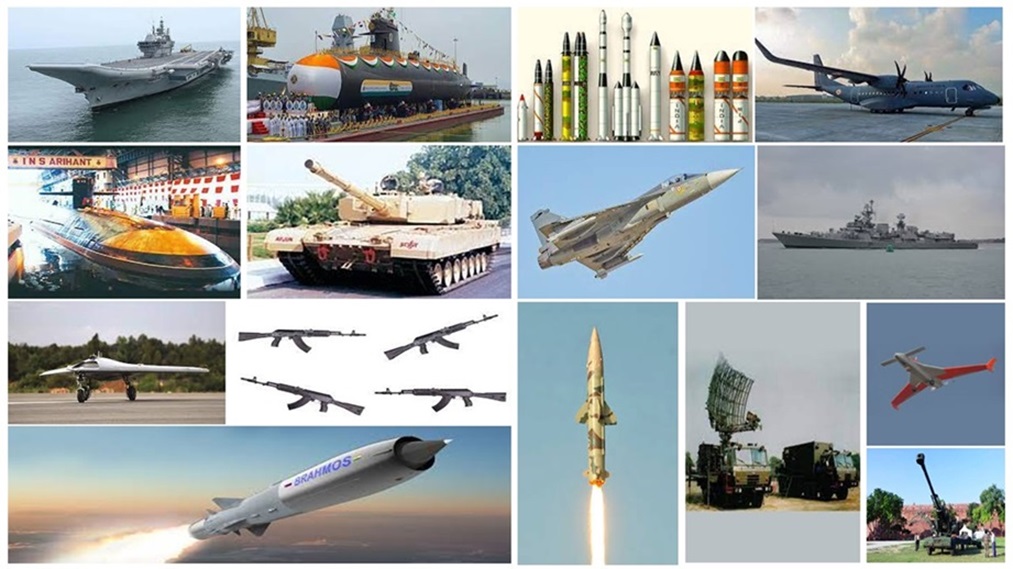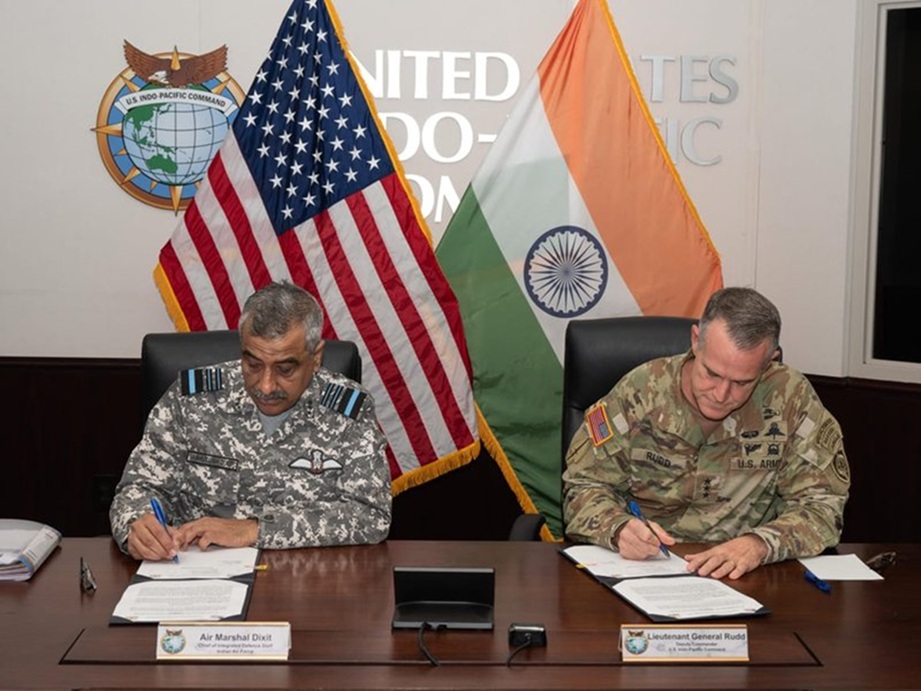The term “big four” in the context of US defence contractors refers to the four largest defence contractors. They are Lockheed Martin, RTX (formerly Raytheon Technologies), Boeing and Northrop Grumman. These companies dominate the US defence market, and they hold a significant portion of government contracts. They have a collective monopoly on defence equipment worldwide and work against defence startups.
Anduril Industries is an American defence technology company formed a few years ago as a startup specialised in autonomous systems, advanced sensors and AI-driven defence solutions. Founded in 2017 by Palmer Luckey, the company has quickly become a major disruptor in the defence sector by introducing Silicon Valley-style innovation and rapid product development in military technology, a model that can be emulated by our defence startups.
Why a Defence Startup?
Luckey was deeply interested in national security and believed that the US military was lagging in adopting cutting-edge technology. Palmer Luckey had sold his previous company, Oculus VR, to Meta in 2017 with several key motivations in mind. Luckey was approached by Trae Stephens, who had been searching for someone interested in a defence startup and manufacturing.
Their shared interest in national security and frustration with the current state of defence innovation led them to assemble a founding team from Palantir and Oculus. They named the company Anduril, meaning ‘Flame of the West’, as in the movie ‘The Lord of the Rings’. They both had the desire to modernise the US defence industry.
They were frustrated with the traditional defence industry and were not happy with every contract going to Lockheed Martin, RTX (formerly Raytheon Technologies), Boeing and Northrop Grumman. Palmer believes that the research and development of these big four contractors is poor, and their monopoly in the defence sector has resulted in China overtaking the US in emerging defence technologies. Palmer believes that the Silicon Valley startups have not given due diligence to defence technology and innovations. Here we can draw parallels with the Indian domestic defence research and development ecosystem.
Approach of Anduril
Anduril is driven by a conviction that the US defence sector has fallen behind in technological innovation, especially compared to advancements in the commercial tech industry. They argued that the US military relies on outdated and overpriced systems. Anduril’s mission is to infuse the defence industry with Silicon Valley’s rapid innovation cycles, agile engineering and a product-driven mindset.
Anduril advocates for a unique approach by building and delivering working solutions before seeking government funding, rather than relying on taxpayer money to develop unproven concepts. Palmer believes that autonomy and artificial intelligence are essential for modern deterrence, allowing the US to field systems that can outpace adversaries without risking as many American lives. He also believes that the advanced, autonomous systems not only enhance US military effectiveness but also serve as a deterrent, making potential adversaries less likely to engage in conflict. Rather than deploying US troops abroad, Palmer supports arming allies with cutting-edge American technology, allowing them to defend themselves more effectively and reducing the need for direct US military intervention abroad.
Anduril Initiatives
Anduril has rapidly developed and deployed products such as autonomous drones, AI-powered surveillance towers, and electromagnetic warfare systems, many of which are already in use by the US military and its allies. The company seeks to reform Pentagon procurement processes by delivering ready-to-use products and pushing for faster adoption of new technologies. Anduril has partnered with other tech leaders, such as Meta and Microsoft, to bring advanced mixed reality and data integration tools to the battlefield, aiming to give soldiers real-time situational awareness and decision-making capabilities.
Major Products of Anduril
(a) Unmanned Aerial Systems (UAS) and Counter-UAS
Altius: A family of fixed-wing, tube-launched unmanned aerial vehicles (UAVs) designed for modular payloads and multiple launch platforms, including aircraft, helicopters, and ground vehicles. Used for reconnaissance, loitering munitions, and mesh-networked swarm operations.
Anvil: A quadcopter designed to intercept and destroy hostile drones. It uses computer vision to autonomously identify and ram aerial threats. The Anvil-M version includes a munitions payload for detonating enemy drones.
Ghost: A modular, multi-role UAV with swarming capability and payload flexibility, used for surveillance, targeting, and potentially laser weapon integration. The Ghost X variant offers extended range and flight time.
Barracuda and Fury: Autonomous aerial vehicles being developed with Rheinmetall for the European market, focusing on rapid production and modularity.
(b) Autonomous Underwater Vehicles (AUVs)
Ghost Shark: An autonomous submarine developed for the Royal Australian Navy, capable of deploying smaller underwater drones or loitering munitions, emphasises rapid development and scalability.
(c) Surveillance and Sensing Systems
Sentry Towers: Autonomous, sensor-equipped towers for border and base security, providing persistent, AI-powered surveillance and threat detection.
Portable Sensor Systems: Includes ground-based and wide-area sensors for expeditionary forces and critical infrastructure monitoring.
(d) Command and Control Software
Lattice: An AI-powered, open operating system that integrates data from Anduril’s hardware, providing real-time situational awareness, sensor fusion, and autonomous control of multiple platforms.
(e) Rocket Motors and Munitions
Anduril manufactures conventional and next-generation solid rocket motors for missiles and space launch, following its acquisition of Adranos.
(f) Extended Reality (XR) and AI-Enhanced Soldier Equipment
In partnership with Meta, Anduril is developing AI-powered helmets and XR products to enhance warfighter perception and enable intuitive control of autonomous platforms on the battlefield.
Learning from Anduril
The uniqueness of Anduril is a learning for defence startups in India. Self-funded product development and rapid prototyping, Silicon Valley-style agility and innovation, deep hardware-software integration, leveraging Artificial Intelligence and data analytics, cost-effectiveness and efficiency and adopting a streamlined path from prototyping to production.
Reforming the Procurement Culture of the MoD/GoI
The procurement system of the Ministry of Defence (MoD) is the single most significant impediment to the growth of private industries in the defence manufacturing sector of India. Anduril is challenging the entrenched incentives of the traditional defence industry of the US, which often rewards R&D spending over actual product delivery. Anduril is pushing the US Department of Defence (US DoD) toward a more outcome-focused procurement mode. This is something which our MoD could implement instead of placing all the eggs in the basket of DRDO and Ordinance Factories/ DPSUs. If the GoI can facilitate funding for the defence startup ecosystem directly, we could see a few dozen Andurils in India.
Conclusion
Anduril is disrupting the US defence sector by self-funding innovation, integrating hardware and software, leveraging AI, and delivering cost-effective solutions at speed, directly challenging the slow, fragmented, and costly practices of traditional defence contractors. Indian defence startups could follow a similar framework to that of Anduril. They can research and develop for the Indian armed forces and bring out products to meet their requirements directly. Even venture capitalists in India can follow a similar approach to aid domestic defence startups. MoD can encourage Anduril kind of startups by facilitating more funds directly to startups.
Disclaimer: The views and opinions expressed by the author do not necessarily reflect the views of the Government of India and Defence Research and Studies.









